توسط chris Grinter, در 25 جولای, 2011 این دوشنبه من از Arctiinae معمولی برای چیزی کاملاً متفاوت حرکت می کنم – میکرولپ! این یک Nepticulidae است, Stigmella diffasciae, و آن را در بزرگ اندازه گیری می شود 6 میلی متر. من نمی توانم برای گسترش این پروانه اعتبار قائل شوم – همه نپتیکولیدهایی که من از آنها عکس گرفتهام متعلق به آکادمی علوم کالیفرنیا هستند و توسط دیو واگنر در زمانی که او برای پست دکترا اینجا بود منتشر شدهاند..
کاترپیلارها قسمت بالایی برگهای آن را استخراج می کنند سیانوتوس و تنها از دامنه های سیرا نوادا در کالیفرنیا شناخته شده اند. اگر اینقدر تمایل دارید، تجدید نظر در گونه آمریکای شمالی این جنس آزادانه است در اینجا موجود است (.مشاهده در قالب PDF).
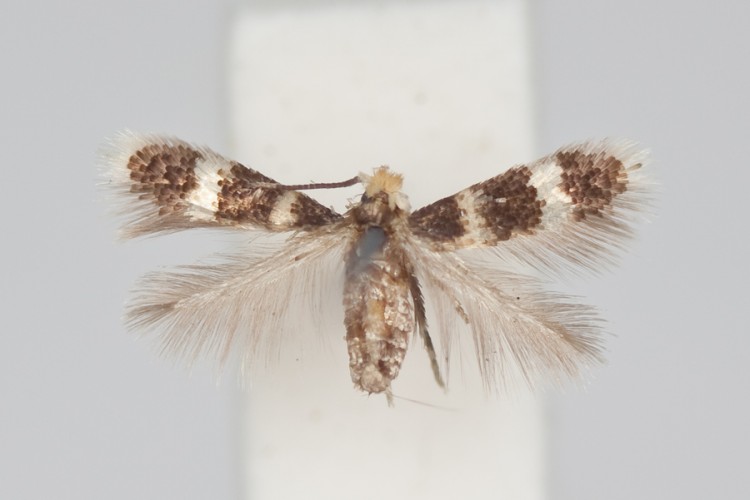 Stigmella diffasciae (Nepticulidae)
توسط chris Grinter, در ژوئیه 22, 2011 مدت کمی از آخرین چالش GOP می گذرد, ولی این یک سافت بال است. I’m hoping they were just too lazy to find a more suitable image…

توسط chris Grinter, on July 19th, 2011 What would Jesus do if he had some free time – maybe cure a disease, end a war, or feed the starving – but nah, everyone sees that coming. Why not shock them to the core – burn your face on a Walmart receipt! حداقل, that’s what a couple in South Carolina believe to have found, آ Walmart receipt with Jesus’s face on it. This isn’t exactly new or exciting, humans have a wonderful ability to recognize a face in just about anything. Jesus and other characters “appear” on random things all the time, and even in 2005 a shrine was built to the Virgin Mary around a water stain in a Chicago underpass.
Pareidolia anyone? در حقیقت, that face looks pretty convincing, I’m not too sure this wasn’t just faked or “enhanced”. The closeups even look like there are fingerprints all over it. Since I don’t have a walmart anywhere near me or a walmart receipt on hand I can’t determine how sensitive the paper is and how easy it would have been to do – but how long do you think before it shows up on ebay? در هر رویدادی, it looks much more like James Randi to me than Jesus (at least we actually know what Randi looks like!).
 from CNN
توسط chris Grinter, در 18 جولای, 2011 روی Arthropoda, مایکل بوک، وبلاگ نویس SFS، تصویری از دوست میدانی خود را به اشتراک گذاشت, قورباغه درختی سبز را وصل کنید. My first thought was of a similar tree frog that haunted welcomed me everywhere I went in Santa Rosa National Park, کاستاریکا. نیازی به گفتن نیست, Costa Rica instills a sudden habit of double checking everything you are about to do. This species is known as the milk frog (Phrynohyas venulosa) for their copious amounts of milky white toxic secretions. One of the first stories Dan Janzen told me while while I was with him at Santa Rosa was about this species – and accidentally rubbing his eye after holding it. Thankfully the blindness and burning was only temporary.
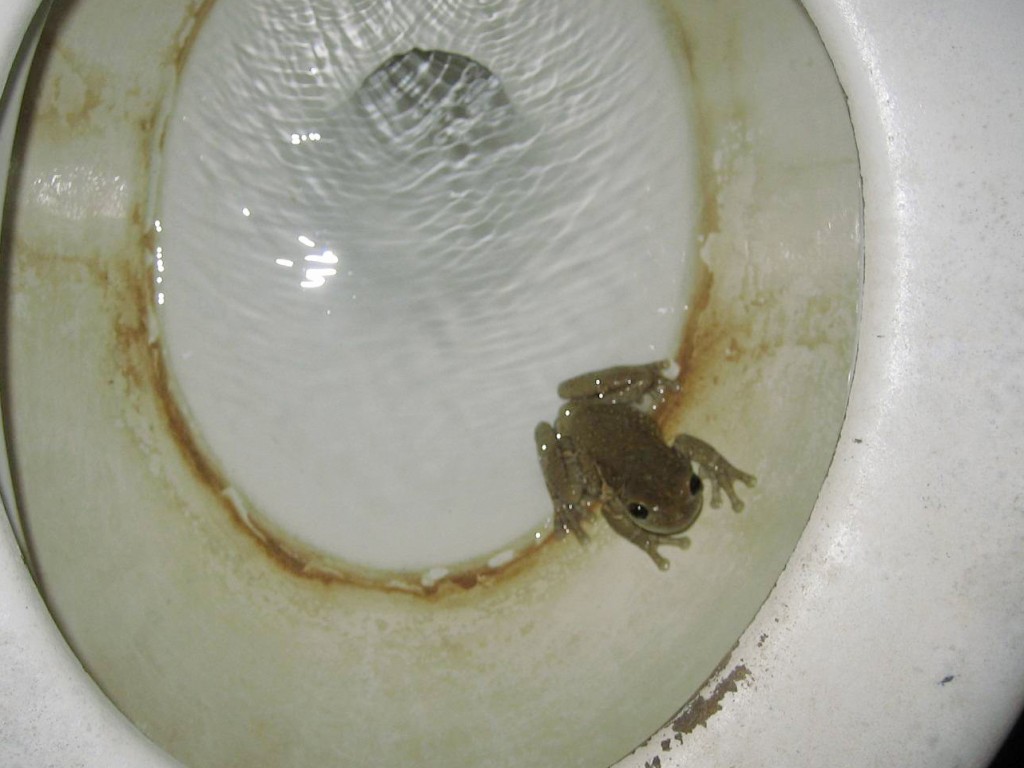 Milk Frog: Phrynohyas venulosa
توسط chris Grinter, در 18 جولای, 2011 I’ll keep the ball rolling with Arctiinae and post a photo today of Ctenucha brunnea. این پروانه می تواند در علف های بلند در امتداد سواحل از سانفرانسیسکو تا لس آنجلس رایج باشد – اگرچه در دهه های اخیر با تخریب زیستگاه و هجوم چمن های ساحلی تعداد این پروانه رو به کاهش بوده است. (آموفیلا آرناریا). اما در هر جایی توده های چچم غول پیکر وجود دارد (Leymus condensatus) شما باید ده ها مورد از این پروانه ها را پیدا کنید که در گرمای روز پرواز می کنند یا روی اسباب بازی شهد می کنند.
 Ctenucha brunnea (اربیدا: Arctiinae)
توسط chris Grinter, در 12 جولای, 2011 خوب همانطور که ممکن است حدس بزنید موضوع آنقدرها که عنوان من نشان می دهد تکان دهنده نیست, اما من نتوانستم از مقاله گاردین استفاده نکنم. وقتی به چیزی برمیخورم که بگوید دانشمندان چنین هستند، واقعاً خندهدار میشوم “حیرت زده”, “سردرگم، گیج، مات مبهوت”, “شوکه”, “متحیر شده”, – حدس می زنم این موضوع برای زمان دیگری باشد… با این وجود الف واقعا پروانه باحالی ظاهر شده است “پروانه های پر شور” نمایشگاهی در موزه بریتانیا در لندن – یک ژیناندرومورف دو طرفه! گاردین گزارش می دهد امروز که این نمونه از پاپیلو ممنون به تازگی ظهور کرده است و شروع به جذب جمعیت کوچکی از بازدیدکنندگان کرده است. می دانم که دوست دارم دوباره یکی از اینها را زنده ببینم – اگرچه وضعیت باغ وحش کمی هیجان را از بین می برد. فکر می کنم تنها چیز هیجان انگیزتر از دیدن یکی از اینهاست در میدان زندگی کنید من می توانم یکی را خالص کنم!
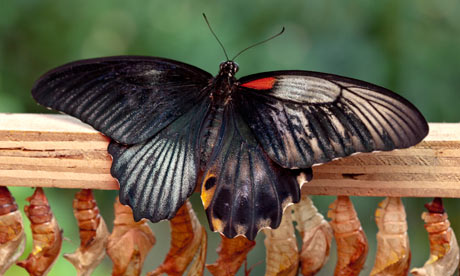
یک چیز کوچک حسگرهای مشکوک من را تحت تأثیر قرار داد و آن نقل قول در انتهای مقاله است که از متصدی پروانه ها گرفته شده است., باغ های سفید. “پروانه ژیناندرومورف یک پدیده علمی جذاب است, و محصول فرآیندهای تکاملی پیچیده است. کشف یک جوجه کشی در محوطه موزه فوق العاده است, به خصوص که آنها بسیار نادر هستند.”
خوب, من به طور خاص نمی بینم که اینها چگونه هستند “محصول … فرآیندهای تکاملی” تا آنجا که تمام زندگی در تمام اشکال محصول تکامل است. اینها استریل هستند “اشکالات” که باحال هستند, اما نه چیزی که به طور خاص له یا علیه تکامل یافته باشد. شاید بهتر باشد که این را یک فرآیند جذاب ژنتیکی بنامیم (که مقاله در واقع با دقت توصیف می کند). همچنین – پروانه ها به صورت بالغ ظاهر می شوند و به صورت کرم از تخم بیرون می آیند – اما این فقط من حساس هستم.
توسط chris Grinter, در 11 جولای, 2011 پروانه امروزی گونه ای زیبا و کمیاب از جنوب شرقی آریزونا و مکزیک است: Lerina incarnata (اربیدا: Arctiinae). مانند بسیاری از گونههای پروازی دیگر، رنگهای درخشانی دارد و به احتمال زیاد یاب است. گذشته از همه اینها, گیاه میزبان یک علف شیر است و کاترپیلار نیز به همان اندازه خیره کننده است (در زیر).
 Lerina incarnata (اربیدا: Arctiinae)
This image of an old, spread specimen hardly does the animal justice, but one lucky photographer found a female ovipositing at the very top of a hill outside of Tucson, آریزونا. While you’re at it go check out some of Philip’s other great photographs on SmugMug.
 Lerina incarnata - Philip Kline, BugGuide As I mentioned above this moth also has an equally impressive caterpillar that feeds on Ascleapias linaria (pineneedle milkweed).
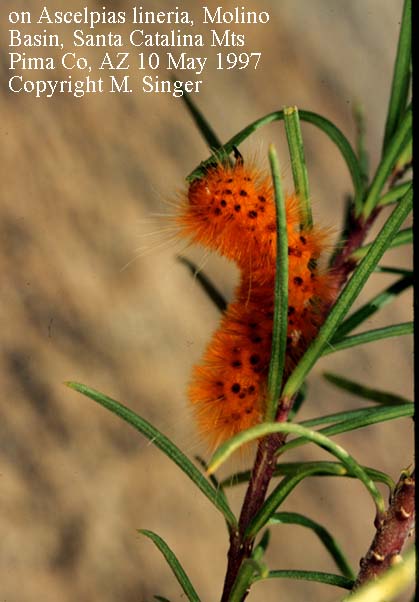
توسط chris Grinter, on July 5th, 2011 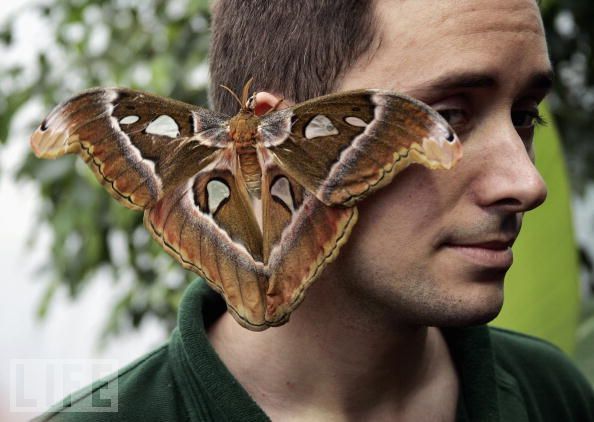
It seems like there is a preponderance of urban legends that involve insects crawling into our faces while we sleep. The most famous myth is something along the lines of “you eat 8 spiders a year while sleeping“. Actually when you google that the number ranges from 4 to 8… up to a pound? Not surprising things get so exaggerated online, especially when it concerns the ever so popular arachnophobia. I doubt the average American eats more than a few spiders over their entire lifetime; your home simply shouldn’t be crawling with so many spiders that they end up in your mouth every night! A similar myth is still a myth but with a grain of truth – that earwigs burrow into your brain at night to lay eggs. It isn’t true that earwigs are human parasites (خوشبختانه), but they do have a predisposition to crawl into tight, damp places. It is possible that this was a frequent enough occurrence in Ye Olde England that the earwig earned this notorious name. Cockroaches have also been documented as ear-spelunkers – but any crawly insect that might be walking on us at night could conceivably end up in one of our orifices.
I have however never heard of a moth crawling into an ear until I came across this story today! I guess a confused Noctuid somehow ended up in this boy’s ear, although I can’t help but to wonder if he put it there himself… Moths aren’t usually landing on people while they are asleep nor are they that prone to find damp, tight spots. But then again anything is possible, some noctuids do crawl under bark or leaves in the daytime for safe hiding. I even came across another story of an ear-moth form the UK (not that the Daily Mail is a reputable source).
به طور طبیعی, some lazy news sources are using file photos of “moths” instead of copying the photo from the original story. It’s extra hilarious because one of the pictures used is of a new species of moth described last year by Bruce Walsh in Arizona. Lithophane leeae has been featured on my blog twice before, but never like this!
On a closing note here is a poem by Robert Cording (also where the above image was found).
Consider this: a moth flies into a man’s ear
One ordinary evening of unnoticed pleasures.
When the moth beats its wings, all the winds
Of earth gather in his ear, roar like nothing
He has ever heard. He shakes and shakes
His head, has his wife dig deep into his ear
With a Q-tip, but the roar will not cease.
It seems as if all the doors and windows
Of his house have blown away at once—
The strange play of circumstances over which
He never had control, but which he could ignore
Until the evening disappeared as if he had
Never lived it. His body no longer
Seems his own; he screams in pain to drown
Out the wind inside his ear, and curses God,
Who, hours ago, was a benign generalization
In a world going along well enough.
On the way to the hospital, his wife stops
The car, tells her husband to get out,
To sit in the grass. There are no car lights,
No streetlights, no moon. She takes
A flashlight from the glove compartment
And holds it beside his ear and, unbelievably,
The moth flies towards the light. His eyes
Are wet. He feels as if he’s suddenly a pilgrim
On the shore of an unexpected world.
When he lies back in the grass, he is a boy
از نو. His wife is shining the flashlight
Into the sky and there is only the silence
He has never heard, and the small road
Of light going somewhere he has never been.
– Robert Cording, Common Life: Poems (Fort Lee: CavanKerry Press, 2006), 29–30.
توسط chris Grinter, در ژوئن 30, 2011 
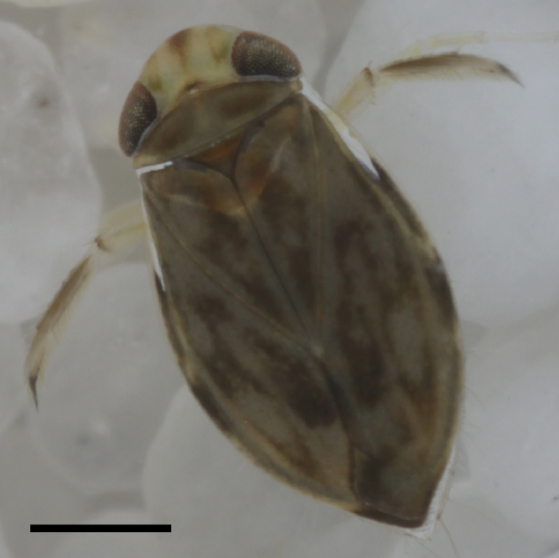 Micronecta Scholtz تپه از حومه اروپا زنده در گروه کر از عاشقانه است, فریاد, اشکالات آبزی مرد. حشرات کمی بالاتر, Micronecta Scholtz (Corixidae), measures in at a whopping 2.3mm and yet produces a clicking/buzzing sound easily audible to the human ear above the water surface. به یک چشم انداز: trying to hear someone talk underwater while standing poolside is nearly impossible, yet this minute insect generates a click loud enough to be mistaken for a terrestrial arthropod. While that doesn’t sound too impressive when we are surrounded by other loud insects like the cicada, م. scholtzi turns out to be a stunningly loud animal when you take into consideration the body size and medium the sound is propagating through to reach our ear. Put into numbers the intensity of the clicks underwater can reach up to 100 dB (Sound Pressure Level, SPL). Shrink us into the insect world and this sound production is equal to a jackhammer at the same distance! So what on earth has allowed this little bug to make this noise and get away with it in a world full of predators?
The authors naturally point out how surprising these results are. The first thing that becomes apparent is that the water boatmen must have no auditory predators since they are basically swimming around making the most noise physically possible for any small animal anywhere. Really this isn’t too surprising since most underwater predators are strictly visual hunters (dragonfly larvae, water bugs and beetles etc…). It is very likely that sexual selection has guided the development of these stridulatory calls into such astounding levels. The second most surprising thing is clear once you graph just how loud these insects are relative to their body size. At the top of the graph is the bottlenose dolphin (T. truncatus) with its famous sonar. But the greatest outlier is actually our little insect in the bottom left with the very highest ratio between sound and body size (31.5 with a mean of 6.9). No other known animal comes close. It is likely though that further examination of other aquatic insects may yield similar if not more surprising results!
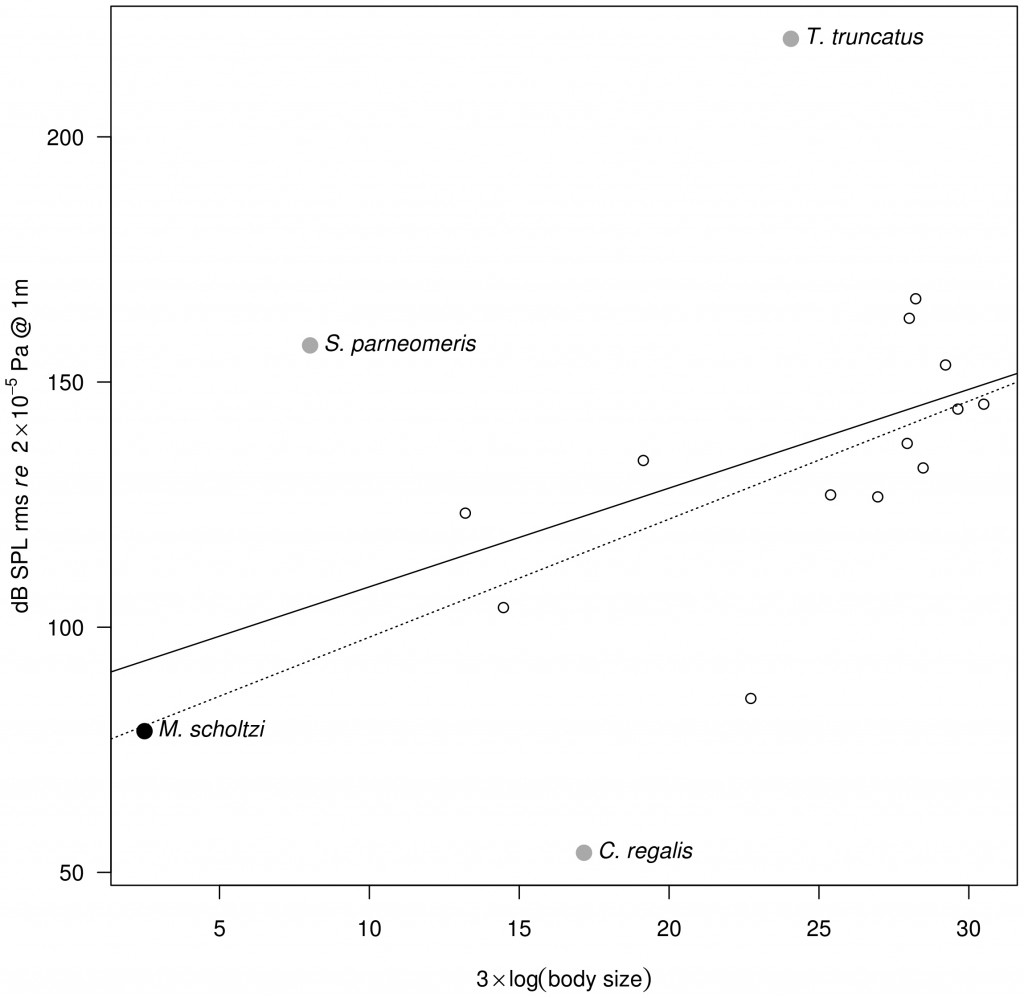
To be more accurate about the “فریاد”, the bugs (bugs in this instance is correct; the Corixidae belong to the order Hemiptera – the true bugs) are likely to be stridulating – rubbing together two parts to generate sound instead of exhaling air, drumming, غیره… In the article the authors speculate that the “sound is produced by rubbing a pars stridens on the right paramere (genitalia appendage) against a ridge on the left lobe of the eighth abdominal segment [15]”. Without pulling up their citation, it appears that stridulation by males in the genus is well documented for mate attraction. And as you would expect, news outlets and science journalists read “genitalia appendage” and translate that to penis: and you end up with stories like this. The function of the parameres can be loosely translated to similar to mandibles in that they are opposing structures (usually armed with hairs) for grasping. The exact use of them may differ by species or even orders, but they are very distinct form the penis (=aedeagus) since they simply help facilitate mating and don’t deliver any sperm. So in reality you have genital “claspers” with a “pars stridens”. And the best illustration of a pars stridens is over on the old blog Archetype. This structure is highlighted below in yellow (and happens to exist on the abdomen of the ant). اما به طور خلاصه – it’s a regular grooved surface akin to a washboard. In the end the sentence quoted above should be translated to “two structures at the tip of the abdomen that rub together like two fingers snapping”.
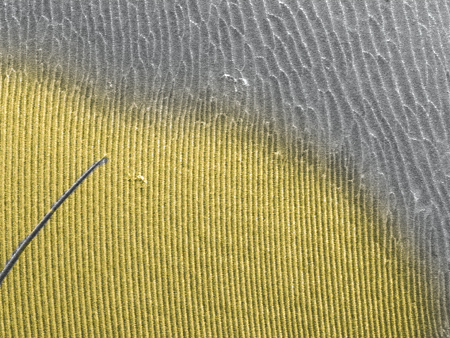 Detail of the pars stridens (in yellow) on the forth abdominal tergite in a Pachycondyla villosa worker (Scanning Electron Micrograph, Roberto Keller/AMNH) Continue reading The incredibly loud world of bug sex
توسط chris Grinter, در ژوئن 20, 2011 من قصد دارم برای حفظ توپ نورد با این سری و سعی کنید به آن را به طور منظم تر. من نیز در برجسته سازی گونه های جدید در هر هفته از مجموعه های عظیم اینجا در آکادمی علوم کالیفرنیا تمرکز. این باید به من مواد به اندازه کافی برای را… حداقل چند صد سال.
 edwardsii Grammia (اربیدا: Arctiinae) نمونه این هفته پروانه ببر است edwardsii Grammia. تا چند سال پیش این خانواده از پروانه ها جدا از Noctuidae در نظر گرفته شد – اما تجزیه و تحلیل مولکولی و مورفولوژیکی اخیر نشان می دهد که این در واقع یک Noctuid است. خانواده Erebidae از درون Noctuidae و Arctiidae کشیده شد در آن قرار داده شد, تبدیل آنها به زیرخانواده Arctiinae. طبقه بندی خسته کننده OK از راه – همه در همه, آن را به یک پروانه زیبا است و تقریبا هیچ چیزی در مورد آن شناخته شده است. این نمونه در سان فرانسیسکو در جمع آوری شد 1904 – در واقع تقریبا تمام نمونه شناخته شده از این گونه در شهرستان در اطراف نوبه خود از قرن جمع آوری شد. در حالی که این پروانه به نظر می رسد بسیار شبیه به فراوان و گسترده Grammia آراسته, تجزیه و تحلیل نزدیک از چشم, شکل بال و آنتن معتقدند که این در واقع یک گونه جداگانه. من اعتقاد دارم که آخرین نمونه در اطراف سال 1920 جمع آوری شده است و آن را تا آن زمان دیده نشده. این احتمال وجود دارد و مایه تاسف است که این پروانه ممکن است در طول این دوره از آخرین منقرض شده 100 سال ها از توسعه منطقه SF خلیج. گرمیا, و Arctiinae به طور کلی, برای سطح بالایی از اختصاصی بودن میزبان شناخته نشده است; آنها تمایل به مانند گاو کمی است و تغذیه تقریبا بر روی هر چیزی در مسیر خود. پس از آن گیج کننده باقی می ماند که چرا این شب پره می زیستگاه امروز ندارد, حتی در یک شهرستان به شدت آشفته. شاید این پروانه تخصصی در نمک زمینه مرداب اطراف خلیج – که همه از خارج با توجه به محل های دفن زباله برای واقعی املاک و پاک شده است (1/3 کل خلیج را پر از دست داده بود). یا شاید این شب پره با ما حتی امروز باقی مانده است، اما هرگز جمع آوری شده به دلیل آن است که یک روز گریزان پرواز گونه ها است. من همیشه چشم من برای محو کردن کوچک نارنجی رنگ را نگه دارید در پارک در فصل بهار…
|
تردید
|














